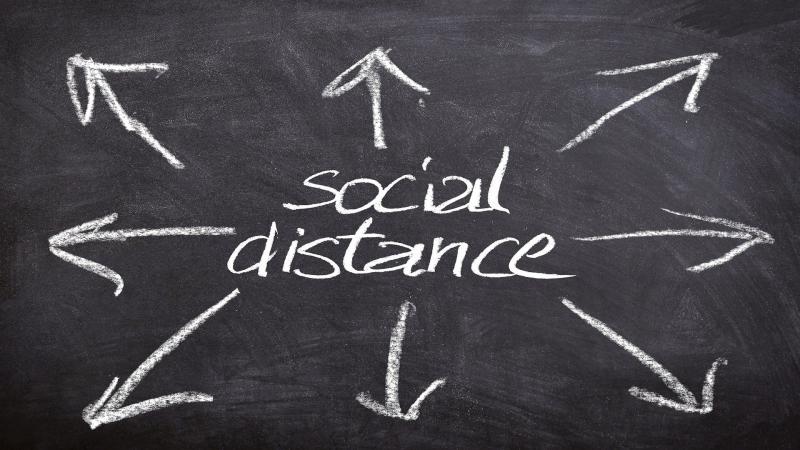
Written by: Jyoti Sharma1 and S. K. Varshney2, Senior Scientist1 and Head2, International Bilateral Cooperation Division, Department of Science and Technology, Government of India
The World Health Organisation (WHO) has declared the coronavirus disease 2019 (COVID-19) a Public Health Emergency of International Concern (under International Health Regulations (2005)) on January 30, 2020, and a global pandemic on March 11, 2020. COVID-19 is caused by severe acute respiratory syndrome coronavirus 2 [SARS-CoV-2] and has spread to 196 countries and territories around the world and one international conveyance (the Diamond Princess cruise ship harboured in Yokohama, Japan).
“Pandemic is not a word to use lightly or carelessly. It is a word that, if misused, can cause unreasonable fear, or unjustified acceptance that the fight is over, leading to unnecessary suffering and death,” said WHO Director-General, Dr Tedros Adhanom Ghebreyesus, in his opening remarks at the media briefing on COVID-19.
Restricting movement of people to prevent the spread of disease is a centuries-old strategy. The word ‘quarantine’ was derived from the Italian words quaranta giorni which mean 40 days. The book of Leviticus in the Bible refers to restrictions for leprosy and the word quarantine was used to try and prevent the spread of the Black Death in the 14th century. Ships were routinely quarantined to prevent the spread of infections, including cholera.
Infectious diseases threaten us with the fear of death and have heavily influenced social behaviours and policy decisions at local, national and international levels. Every hundred years, there seems to be a great pandemic, like the plague in 1720, cholera in 1820 and Spanish flu in 1918.
The great plague of Marseille, caused by the bacteria Yersinia pestis spread through the merchant ship “Grand-Saint-Antoine” to Marseille, France in 1720. Quarantining the ship to stop the infection failed as the owner of the ship, who also happened to be Marseille’s deputy mayor, convinced health officials to let him unload its cargo. Plague-carrying rat fleas soon spread across the city, sparking an epidemic and killing roughly 100,000 people.
Another example of how an epidemic spreads fast in the absence of quarantine is the first cholera pandemic (1817–24), also known as Asiatic cholera. This began near the city of Calcutta, India and spread throughout Southeast Asia to the Middle East, eastern Africa and the Mediterranean coast. The movement of the British Army, Navy and merchant ships carried the disease to Nepal, Afghanistan and shores of the Indian Ocean, from Africa to Indonesia, and north to China and Japan.
The 1918 Spanish Flu, the most deadly and severe pandemic in modern history, infected about one-third of the world’s population and killed around 50 million including 675,000 Americans. The rapid movement of troops across the borders during World War 1 (WW 1) resulted in person-to-person transmission and might have added mutation.
In the last 102 years, the world’s population has increased from around 1.5 billion to over 7 billion. There has been a change in public health and life expectancy, and air travel and global supply chain have become the norm. We need to learn from past experiences and understand the urgency of quarantine during pandemics. The latest reports indicate that China and South Korea learned from the past and acted accordingly against COVID-19. The mandatory lockdown of Wuhan and nearby cities in Hubei province since January 23 effectively prevented further exportation of infected individuals to the rest of the country. In other regions of mainland China, people followed aggressive and agile ‘social distancing’ measures and local government authorities monitored those rigorously. All major national events and activities like sports, cinema and theatre, were cancelled or postponed, and schools and colleges were closed and the spring holidays extended.
The various measures helped in reducing the average number of people, an infected person can pass the disease to, when everyone in the population is susceptible. This number, called R0, depends on three factors; how long people with COVID-19 are infectious, the probability of transmission per contact between susceptible and infected individuals, and the average rate of such contacts. The rate of spread of the epidemic depends on R0 and on the time between one case and the next in the chain of transmission, which is known as the serial interval. Mathematical modelling has shown that strict implementation of social distancing may reduce the overall number of cases by 62% and the peak number of cases by 89% in India and flatten the curve in Australia if 8 out of 10 Australian stays at home.
The societal impact of quarantine and social distancing depends on the evidence-based interventions of the health authorities and policymakers. Construction of two dedicated hospitals with 2600 beds for COVID-19 patients in just over one week and mobilization of 40,000 health care workers in Wuhan from other parts of mainland China showed the strong commitment of the Chinese government in tackling the disease.
“In the face of a previously unknown virus, China has rolled out perhaps the most ambitious, agile and aggressive disease containment effort in history,” reads the report of the WHO-China Joint Mission on Coronavirus Disease 2019 (COVID-19).
China included COVID-19 in the statutory report of Class B and border health quarantine infectious diseases and strengthened its diagnosis, monitoring, and reporting. In Wuhan alone, more than 1800 teams of epidemiologists, with a minimum of 5 people per team, traced tens of thousands of contacts. The same way, South Korea developed the capacity to test 20,000 people a day at 633 sites, including drive-thru centres and phone booths and tested 286000 people as compared to 60000 in the USA till March 17.
The lack of strong epidemiological investigations was one of the shortfalls to control past pandemics. Use of the social distancing and quarantining, facilitated by artificial intelligence (AI), social media and Big Data through two widely used mobile apps, AliPay and WeChat, in China and continuous digital monitoring in South Korea helped to enforce the restrictions and track people’s movements.
The learning from SARS—another disease which originated from China— enabled improving accessibility and affordability of medical materials, providing personal protection materials and ensuring basic necessities for affected people. The government exceeded current production capacity along with expanding imports of medical materials, promoted indigenous mass manufacturing of diagnostic kits, supported local enterprises and used cross-border e-commerce platforms to guarantee supplies in China and South Korea. However, a shortage of health staff, resources and equipment showed the weaknesses of public health systems in many European countries. The COVID-19 pandemic has also triggered the need for an efficient and well-equipped public system to deal with future global pandemics.
Another big lesson from SARS was to reduce all avoidable hospitalisations ahead of the outbreak and treat patients at home as much as possible. Community volunteers were organized to support self-isolation and help isolated residents at home in China to solve practical health and life difficulties.
All these draconian measures were implemented with a social and economic price tag, but the measures worked in China. China’s strategy for addressing epidemic prevention and production, the right use of AI, big data and other scientific measures, effective policy implementation and deep commitment to collective action indicate learning from the past and taught the world to cope up with the current pandemic. On the other hand, South Korea’s strategy to flatten the curve with a rigorous testing regime and clear public information can also not be ignored by other countries. Policymakers should also keep in mind that forced measures can raise suspicion and resentment during an outbreak. Voluntary action should be promoted and reinforced by persuasion, shared understanding and common ownership.
This pandemic acts as a reminder that most of the countries need a comprehensive national programme for infection prevention and control, specialist training programmes and dedicated staff to implement national guidance, robust health care capacity, renovation to achieve minimal facility standards for infection control in emergency departments, enough negative pressure rooms, use of artificial intelligence and compilation of data of people who are undergoing medical treatment.
EDITOR'S NOTE : The article has been edited for brevity and clarity.






